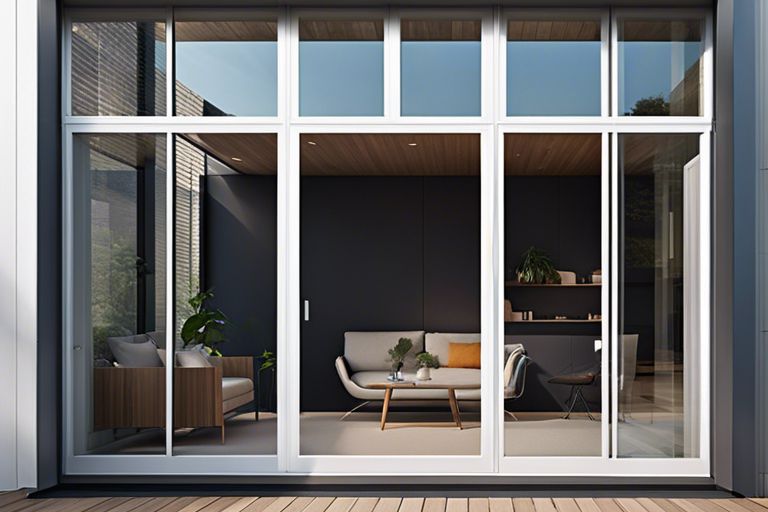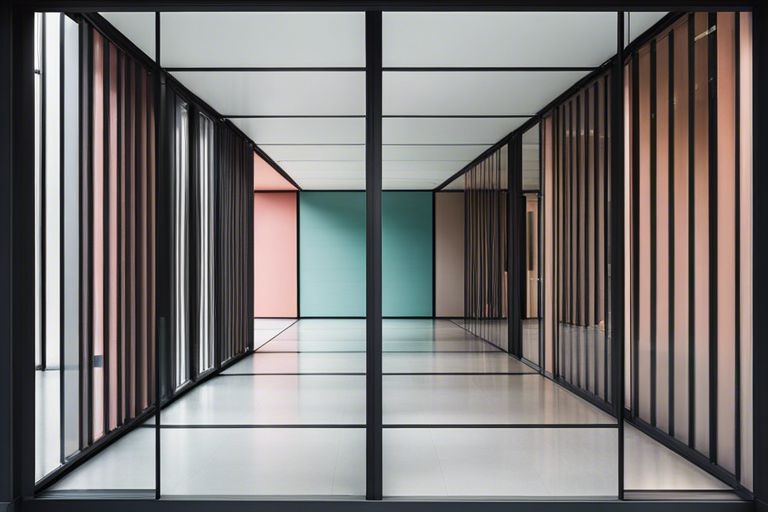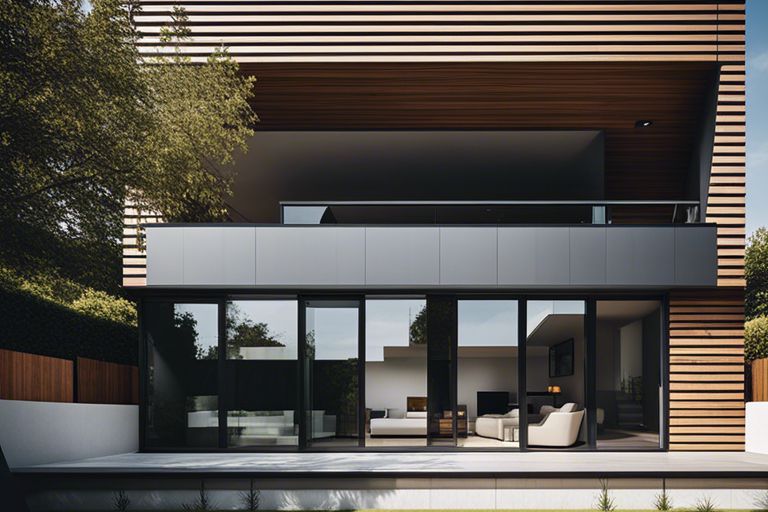When it comes to upgrading your home with rooflights, the focus is often on the stunning natural light they bring into a space. However, one aspect that is sometimes overlooked is the acoustic benefits that flat rooflights can offer. By installing flat rooflights, not only do you enhance the natural light in your home, but you also benefit from improved sound insulation properties. This can be especially advantageous in urban areas or near busy roads, where noise pollution can be a constant issue. The soundproofing qualities of flat rooflights can help create a peaceful and quiet environment within your home, allowing you to enjoy the tranquillity without being disturbed by external noises.
Key Takeaways:
- Increased natural light: Installing flat rooflights can enhance the amount of natural light entering a space, creating a more bright and airy environment.
- Improved acoustic insulation: Flat rooflights can provide better sound insulation compared to traditional roof windows, helping to reduce noise from the outside environment.
- Enhanced thermal performance: By using high-quality materials and insulation, flat rooflights can contribute to better thermal efficiency in a building, ultimately leading to energy savings.
Understanding Flat Rooflights
Definition and Design Features
Flat rooflights are architectural elements that allow natural light to enter a living space from above, creating a sense of openness and brightness. These skylights are designed to sit flush with the roofline, offering a sleek and modern appearance to any building. The frame of a flat rooflight is typically made from durable materials such as aluminium or steel, with the glazing providing thermal efficiency and UV protection.
Types of Flat Rooflights
There are several types of flat rooflights available in the market, including fixed rooflights, opening rooflights, and walk-on rooflights. Fixed rooflights are stationary and provide a continuous source of natural light, while opening rooflights can be ventilated to allow for fresh air circulation. Walk-on rooflights are specifically designed to bear weight, allowing them to be installed in roof terraces or balconies.
| Fixed Rooflights | Stationary, continuous natural light source |
| Opening Rooflights | Can be ventilated for air circulation |
| Walk-On Rooflights | Designed to bear weight for roof terraces or balconies |
| Can be Ventilated | Allow for fresh air circulation |
| Provide Thermal Efficiency | Help in maintaining a comfortable indoor temperature |
When choosing the right type of flat rooflight for a project, factors such as location, desired functionality, and aesthetic preferences should be taken into consideration. It is essential to consult with a professional to determine the most suitable option based on the specific requirements of the building.
- Consider location, functionality, and aesthetic preferences when choosing a flat rooflight.
- Consult with a professional to determine the most suitable option.
- Thou should always prioritise safety and performance when selecting a flat rooflight.

Acoustic Performance of Flat Rooflights
In this chapter, we will explore into the acoustic benefits of installing flat rooflights in a property. Understanding the acoustic performance of rooflights is essential for creating a comfortable and peaceful indoor environment.
Sound Insulation Principles
One of the key factors affecting the sound insulation of flat rooflights is the materials used in their construction. High-quality rooflights with double or triple glazing can significantly reduce noise transmission from the outside environment into the interior of a building. Additionally, the seals and frames around the rooflights play a crucial role in preventing sound leakage.
Furthermore, the installation of flat rooflights also impacts their sound insulation capabilities. Proper installation techniques, such as ensuring a tight fit and adequate sealing, are essential for maximising the acoustic performance of rooflights.
Impact of Flat Rooflights on Noise Reduction
The presence of flat rooflights can have a positive impact on noise reduction within a building. By effectively blocking out external noise sources, such as traffic or neighbours, flat rooflights contribute to creating a quieter and more peaceful indoor environment. This is especially beneficial for properties located in noisy urban areas or near busy roads.
Moreover, the design of flat rooflights, including their innovative features and soundproofing technology, can further enhance their noise reduction capabilities. When strategically placed and properly installed, flat rooflights can help create an acoustically optimised space for occupants to enjoy.

Installation and Materials
Flat rooflights are popular for their ability to bring in natural light and create a spacious feel in any room. Proper installation is crucial to ensure the benefits of these rooflights are maximised. Additionally, the choice of materials can have a significant impact on their acoustic performance, making it essential to select the right materials for your project.
Best Practices for Installing Flat Rooflights
When installing flat rooflights, it is imperative to follow best practices to ensure a watertight and secure fit. Professional installation by experienced rooflight fitters is highly recommended to avoid any potential issues such as leaks or inadequate sealing. Properly integrating the rooflights with the roofing material is essential to maintain the structural integrity of the roof and prevent water ingress.
Furthermore, it is crucial to consider the surrounding environment and potential exposure to extreme weather conditions during the installation process. Adequate insulation and flashing details should be carefully implemented to enhance the thermal performance and longevity of the rooflights. Regular maintenance and inspections are also essential to ensure their functionality and prevent any problems that may arise over time.
Material Choices and Their Acoustic Properties
Choosing the right materials for flat rooflights can greatly impact their acoustic performance. Materials such as laminated glass and uPVC frames are commonly used for their soundproofing qualities, helping to reduce noise transmission from the outside environment. These materials can significantly improve the acoustics within a room, creating a peaceful and quiet indoor atmosphere.
On the other hand, materials like aluminium frames may offer less acoustic insulation but provide durability and sleek design options. It is important to carefully consider the acoustic requirements of your space and select materials that balance both acoustic properties and aesthetic preferences. Consulting with acoustic experts or manufacturers can help you make an informed decision based on your specific needs.
Overall, the choice of materials for flat rooflights plays a vital role in determining their acoustic performance. Combining high-quality materials with proper installation practices is key to achieving optimal acoustic benefits in addition to maximising natural light and energy efficiency.
Additional Benefits and Considerations
Energy Efficiency and Thermal Comfort
Flat rooflights not only enhance natural light levels within a property but also contribute to energy efficiency and thermal comfort. By allowing more natural light to enter a space, they can reduce the need for artificial lighting during the day, ultimately lowering energy consumption. Additionally, well-insulated flat rooflights help to regulate the indoor temperature by minimising heat loss in colder months and reducing heat gain during hotter periods.
Furthermore, the design of flat rooflights can be tailored to maximise thermal performance by incorporating features such as double or triple glazing, low-emissivity coatings, and thermally broken frames. These elements work together to create a more energy-efficient and comfortable living environment for occupants.
Aesthetic and Functional Advantages
Aside from their energy-efficient properties, flat rooflights offer a range of aesthetic and functional advantages for modern properties. Their sleek and minimalistic design adds a contemporary flair to any architectural space, creating a feeling of openness and connection to the outdoors. Additionally, flat rooflights can be strategically placed to provide stunning views of the sky, day or night, enhancing the overall ambience of a room.
Moreover, the versatility of flat rooflights allows them to be used in various applications, from residential extensions to commercial buildings. Whether installed in a kitchen, living room, office, or even a bathroom, flat rooflights have the ability to transform any space by flooding it with natural light and creating a sense of spaciousness.

The Acoustic Benefits of Installing Flat Rooflights
Flat rooflights not only bring an abundance of natural light into a room, but they also offer acoustic benefits. The double or triple-glazed glass used in flat rooflights helps to reduce outside noise, creating a peaceful and quiet living environment. This is particularly beneficial for homes in noisy urban areas or near busy roads, as the added insulation provided by flat rooflights can significantly improve soundproofing. By installing flat rooflights, homeowners can enjoy the perfect combination of natural light and tranquillity in their living spaces.
All things considered, the installation of flat rooflights is a practical solution for those looking to enhance their home’s acoustic environment. Alongside the aesthetic appeal and energy efficiency benefits, the acoustic advantages of flat rooflights make them a valuable addition to any property.
FAQ
Q: What are the acoustic benefits of installing flat rooflights?
A: Installing flat rooflights can help reduce external noise infiltration into your property. The double or triple glazing used in flat rooflights provides an additional barrier against sound, making your living space quieter and more peaceful.
Q: How do flat rooflights enhance natural light and create a sense of space?
A: Flat rooflights maximise the amount of natural light that enters a room, creating a bright and airy atmosphere. The sleek design of flat rooflights allows for unobstructed views of the sky, which can make indoor spaces feel more spacious and connected to the outdoors.
Q: Are flat rooflights energy-efficient and environmentally friendly?
A: Yes, flat rooflights are energy-efficient as they allow natural light to illuminate a room, reducing the need for artificial lighting during the day. This can lead to lower energy consumption and reduced utility bills. Additionally, the insulation properties of flat rooflights can help regulate indoor temperatures, reducing the reliance on heating and cooling systems.






